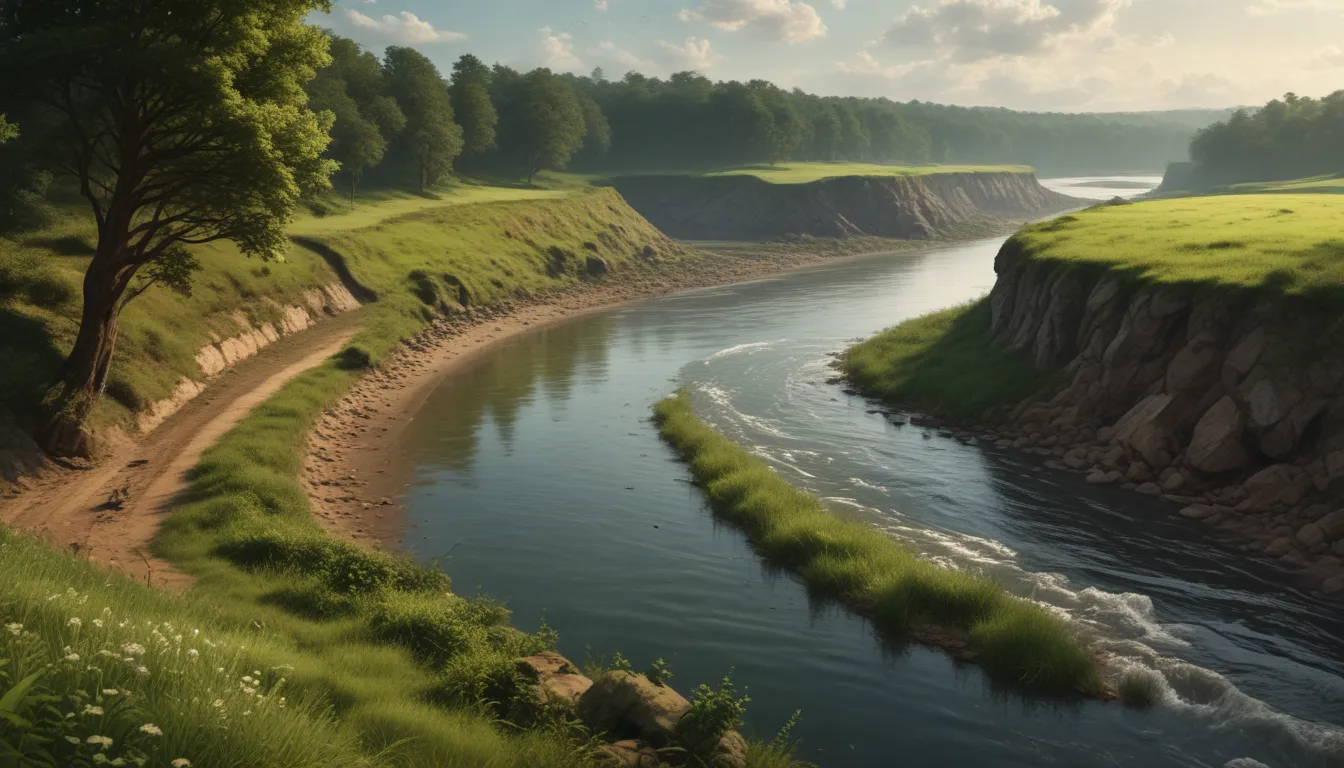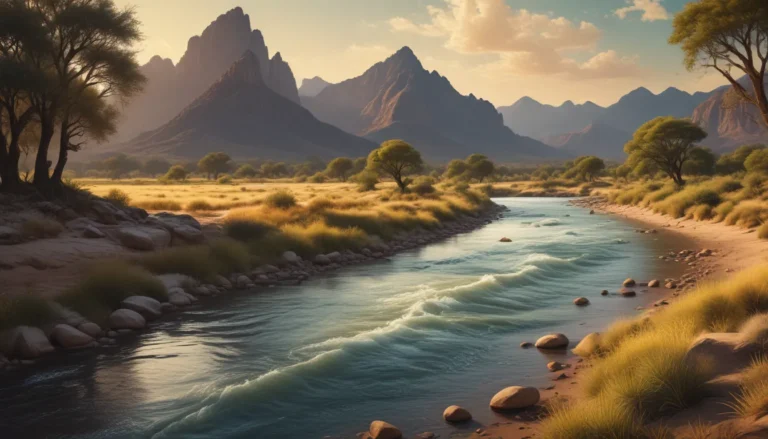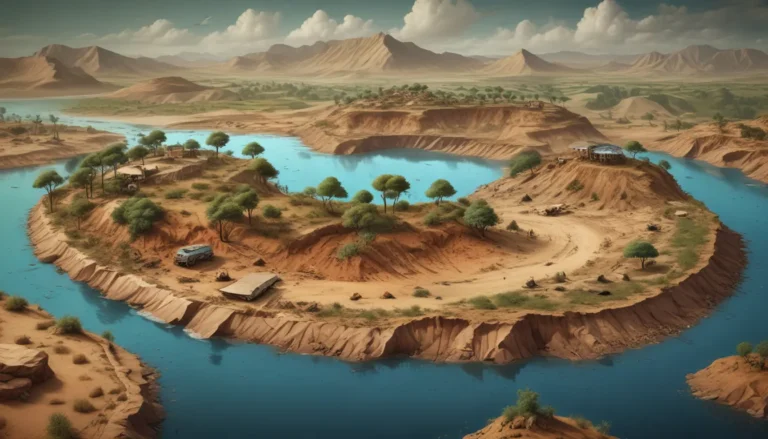A Note About Images: The images used in our articles are for illustration purposes only and may not exactly match the content. They are meant to engage readers, but the text should be relied upon for accurate information.
Natural levees are nature’s way of creating protective embankments along riverbanks, offering a fascinating insight into the dynamic interactions between water and land. These formations serve as essential barriers against flooding, supporting fertile agricultural landscapes and diverse ecosystems. From their composition to their ecological benefits, natural levees are a captivating subject worth exploring. Join us in uncovering 10 fascinating facts about these remarkable features, and gain a deeper understanding of their significance in our environment.
Unveiling the World of Natural Levees
Natural levees are elevated landforms that develop alongside river channels through the deposition of sediment carried by floodwaters. Over time, these sediments accumulate, forming a ridge that functions as a protective barrier against flooding. Their formation is a testament to the intricate relationship between rivers and their surrounding landscape.
The Dance of Nature: How Natural Levees Form
The creation of natural levees is a result of the dynamic interplay between rivers and their floodplains. When floodwaters overflow onto the floodplain, they carry sediment that gets deposited along the riverbanks, gradually shaping the levee’s structure. This continuous process of sediment deposition contributes to the growth and development of natural levees.
Guardians of the Land: The Role of Natural Levees
Natural levees act as a natural defense system, serving as a shield against floodwaters and protecting nearby communities and farmland. By redirecting the flow of water, these formations help mitigate the impact of flooding events, thereby safeguarding valuable land and infrastructure.
The Building Blocks: Composition of Natural Levees
Comprised of a mix of sand, silt, clay, and organic matter, the composition of natural levees varies depending on the characteristics of the river and its surroundings. These sediments are not only critical in forming the levee but also contribute to the richness of the soil, supporting abundant vegetation and agriculture.
A Fertile Oasis: Soil Fertility on Natural Levees
The nutrient-rich sediments deposited on natural levees create fertile ground that sustains lush vegetation and fosters ideal conditions for agriculture. This fertile soil plays a crucial role in supporting various plant species and promoting agricultural productivity.
Sculptors of Change: The Ever-Changing Nature of Natural Levees
Natural levees are not static formations but rather dynamic structures that continuously evolve. They are subject to alterations caused by flood events, erosion, and sedimentation, which reshape and modify their appearance over time. This constant change highlights the dynamic nature of rivers and their surrounding landscapes.
Havens of Biodiversity: Natural Levees as Ecological Hotspots
With their high nutrient content and abundant water supply, natural levees serve as havens for diverse plant and animal species. These habitats provide essential breeding grounds and shelter for a wide range of organisms, contributing to the biodiversity of river ecosystems.
Stewards of the Environment: The Vital Importance of Natural Levees
Natural levees play a crucial role in sustaining healthy river ecosystems by offering habitat diversity, aiding in water filtration, and regulating water flow. They are essential for maintaining the balance and health of riverine environments, supporting the flourishing of various life forms.
Battling Erosion: Protection Offered by Natural Levees
The protective boundaries created by natural levees help reduce riverbank erosion by stabilizing the banks and preventing valuable agricultural land and infrastructure from being eroded away. They play a vital role in preserving the integrity of the land against the erosive forces of water.
The Evolution of Natural Levees: A Journey of Change
Over time, natural levees can undergo a process of evolution and lateral migration within the floodplain. As river channels shift and alter their course, new levees may form, highlighting the dynamic nature of these formations and their capacity for change.
Natural levees are not just geological wonders; they serve as essential components of our environment, offering protection against flooding and supporting diverse ecosystems. By delving into the intriguing facts surrounding these formations, we gain a deeper appreciation for the intricate balance between rivers, floodplains, and the surrounding landscape.
Embracing the Marvels of Natural Levees
In conclusion, natural levees embody the beauty and resilience of our natural world, showcasing the harmonious coexistence of water and land. Their vital role in flood control and environmental preservation underscores the importance of understanding and appreciating these formations. By recognizing their significance and dynamic nature, we can work towards sustainable flood management strategies and foster the long-term health of our ecosystems.
FAQs: Exploring More about Natural Levees
-
What exactly are natural levees?
Natural levees are raised landforms that develop alongside rivers and streams, formed by the accumulation of sediment deposited during flooding events. -
How are natural levees formed?
Natural levees are created when sediment-rich floodwaters overflow onto the adjacent floodplain, depositing layers of silt, sand, and other materials along the banks. -
What is the purpose of natural levees?
The primary role of natural levees is to act as natural barriers that help contain and control the flow of water during flooding events, protecting the surrounding land and communities. -
Are natural levees found all around the world?
Yes, natural levees exist in many regions where rivers and streams flow, experiencing regular flooding. They are a common feature of floodplains across the globe. -
Can natural levees provide ecological benefits?
Natural levees offer several ecological advantages, such as creating diverse habitats, promoting nutrient cycling, and enhancing the overall health of ecosystems. -
How can we manage natural levees to minimize flood risks?
Managing natural levees involves strategies like land-use planning, vegetation maintenance, levee integrity monitoring, and flood control measures to reduce flood risks effectively.
Exploring the wonders of natural levees opens a door to the intricate relationship between water, land, and life. By learning more about these formations and their significance, we can deepen our understanding of the natural world and work towards preserving its beauty and functionality for future generations.






